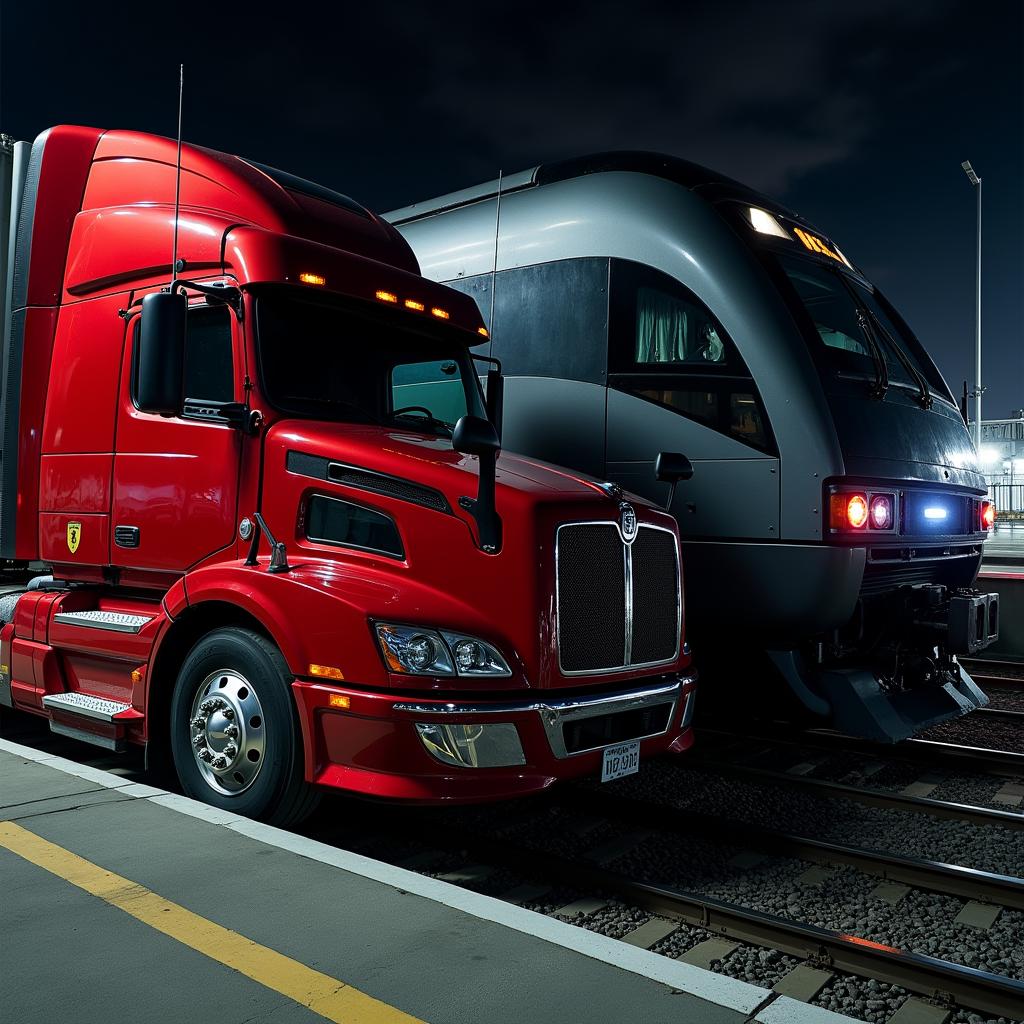Trucking and Rail Freight: A Seamless Partnership
In today’s fast-paced logistics world, the integration of trucking with rail freight has become increasingly vital for efficient supply chain management. This powerful combination offers businesses a cost-effective and environmentally conscious solution for moving goods across vast distances. As we delve into this dynamic partnership, we’ll explore how these two transportation modes work together to create a seamless logistics network that benefits shippers and consumers alike.
The Evolution of Intermodal Transportation
—————————————-
The journey of combining rail and truck transportation dates back to the mid-20th century, but recent technological advances have revolutionized this partnership. Modern intermodal transport has grown exponentially, with the Association of American Railroads reporting a significant increase in intermodal volumes over the past decade. This growth reflects the industry’s recognition of the benefits that come from combining these two powerful transportation modes.
The relationship between trucking and rail has evolved from competition to collaboration, creating a more efficient and sustainable freight transportation system. This evolution has been driven by factors such as:
– Rising fuel costs
– Environmental concerns
– Highway congestion
– Labor shortages
– Technological advancement
Understanding the Synergy
————————
The successful integration of trucking and rail freight relies on their complementary strengths. While railways excel at long-distance transportation of large volumes, trucks provide the flexibility and accessibility needed for first and last-mile delivery. This partnership creates a comprehensive solution that maximizes the benefits of both modes.
Rail Advantages:
– Fuel efficiency for long distances
– Lower cost per ton-mile
– Reduced carbon footprint
– Ability to move large volumes
– Less affected by weather conditions
Trucking Advantages:
– Door-to-door delivery capability
– Schedule flexibility
– Quick loading and unloading
– Access to remote locations
– Personalized service
The Infrastructure Behind the Partnership
—————————————
For the integration of trucking with rail freight to work effectively, sophisticated infrastructure is essential. This includes:
Intermodal Terminals
These facilities serve as the crucial transfer points where containers move between trucks and trains. Modern terminals are equipped with advanced container handling equipment and automated systems to ensure quick, efficient transfers.
Container Technology
Standardized containers designed for both rail and truck transport have revolutionized intermodal shipping. These containers can be quickly transferred between modes without handling the cargo inside, reducing handling costs and damage risks.
Information Systems
According to the Bureau of Transportation Statistics, advanced tracking and monitoring systems have become integral to managing intermodal operations effectively.
Benefits for Business and Environment
———————————–
The partnership between trucking and rail offers numerous advantages for businesses and the environment:
Economic Benefits
– Reduced transportation costs
– Improved fuel efficiency
– Lower labor costs
– Decreased maintenance expenses
– Better asset utilization
Environmental Impact
– Reduced carbon emissions
– Lower fuel consumption
– Decreased highway congestion
– Improved air quality
– Reduced noise pollution
Studies by the Environmental Protection Agency show that rail transport can be up to four times more fuel-efficient than trucking alone.
Challenges and Solutions
———————–
While the integration of trucking and rail freight presents many advantages, there are challenges to overcome:
Scheduling and Coordination
– Real-time tracking systems
– Advanced planning software
– Improved communication protocols
– Predictive analytics
– Buffer time management
Infrastructure Limitations
– Ongoing terminal modernization
– Track expansion projects
– Equipment upgrades
– Technology integration
– Capacity improvements
Future Trends and Innovations
—————————-
The future of integrated rail and trucking transportation looks promising, with several emerging trends:
1. Autonomous Vehicles
– Self-driving trucks for terminal operations
– Automated loading/unloading systems
– Smart container handling
2. Digital Technologies
– Blockchain for transparency
– Internet of Things (IoT) sensors
– Artificial Intelligence for routing
– Machine learning for optimization
3. Sustainable Practices
– Electric trucks for local delivery
– Alternative fuel solutions
– Green terminal operations
– Renewable energy integration
Making the Most of the Partnership
——————————–
To maximize the benefits of combined rail and trucking services, consider these best practices:
1. Strategic Planning
– Analyze shipping patterns
– Identify optimal routes
– Plan for seasonal variations
– Consider volume commitments
2. Technology Integration
– Implement tracking systems
– Utilize planning software
– Adopt communication platforms
– Invest in data analytics
3. Relationship Building
– Develop carrier partnerships
– Maintain regular communication
– Share forecasts and plans
– Build long-term relationships
Conclusion
———-
The integration of trucking with rail freight represents a powerful solution for modern logistics challenges. This partnership continues to evolve, offering businesses increasingly efficient and sustainable transportation options. As technology advances and environmental concerns grow, the importance of this relationship will only increase.
Ready to optimize your supply chain with integrated rail and trucking solutions? Contact us today at +1 206-337-4787 to discuss how we can help streamline your transportation needs. Our expert team will work with you to develop a customized solution that leverages the best of both worlds – the efficiency of rail and the flexibility of trucking.
Don’t let transportation challenges hold your business back. Take the first step toward a more efficient, sustainable, and cost-effective shipping strategy. Call us now to learn more about how we can help you achieve your logistics goals through the power of integrated rail and trucking solutions.







